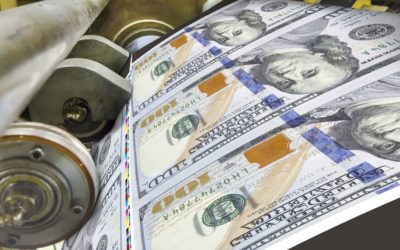15/03/20203 mins
Monthly Commentary – February 2020
The world’s stockmarkets fleetingly hit record highs in February, before swiftly pulling back as concerns about the coronavirus grew. Lingering hopes that the impact would be contained evaporated as the outbreak escalated, prompting a flight to safety among investors. Measures to suppress the virus look set to constrain economic activity and corporate earnings – both by reducing demand for products and services and by disrupting supply chains.
With earnings season in full swing, companies attempted to quantify the impact on their first-quarter results. A notable victim was Apple, which warned that it would fail to meet its first-quarter sales forecast. Alongside news of the escalating outbreak in South Korea and weak business survey data from the US, these gloomy outlook statements added to the growing evidence that the crisis would be more far-reaching than some had initially expected.
As the impact of the virus became clearer, the stockmarkets entered a correction – defined as a 10% fall from a recent peak. For some major markets, the swift reversal was said to be the fastest in history.
In response to the unfolding crisis, various central bank chiefs signalled that they were monitoring the situation with a view to acting if required. China cut its prime lending rates, and various Asian countries announced fiscal measures. As expectations grew that the US Federal Reserve would engage in further easing, there were some brief spells of respite from the stockmarket sell-off. Jay Powell, the Fed’s chair, indicated that the bank was ready to act to support the economy, which prompted markets to price in a near certainty of imminent interest rate cuts. This sent 30-year US Treasury yields to record lows.
The month’s strongest returns came from Asia Pacific (ex Japan), amid signs the outbreak was slowing in China, where the virus originated. The worst performing regions were the UK and Latin America, where resources stocks suffered as investors factored in weaker demand.
While all areas of the market declined, traditionally defensive sectors held up best with more economically sensitive sectors among the biggest fallers. Energy led the declines given its exposure to economic growth. Materials, industrials and financials were similarly affected. The best returns came from telecommunications because of its stable revenues; we like the sector for this reason, as well as because we believe it stands to benefit from a more sympathetic stance from regulators as building of 5G and fibre networks ramps up. Helped by lower interest rates, real estate also proved relatively resilient.
We have long championed the virtues of gold and the precious metal showed its worth during the month as worries crept into the investment markets. The economic response to the coronavirus has mirrored the response to the financial crisis – i.e. deploy more cheap money. This has the effect of devaluing paper money. In this environment, gold acts like a currency that is immune to devaluation. We express our view on gold through miners such as Newmont Mining and Barrick Gold – our two best performing stocks in February.
Please remember that past performance may not be repeated and is not a guide for future performance. The value of shares and the income from them can go down as well as up as a result of market and currency fluctuations. You may not get back the amount you invest.
Please note that SIT Savings Ltd is not authorised to provide advice to individual investors and nothing in this article should be considered to be or relied upon as constituting investment advice. If you are unsure about the suitability of an investment, you should contact your financial advisor.



